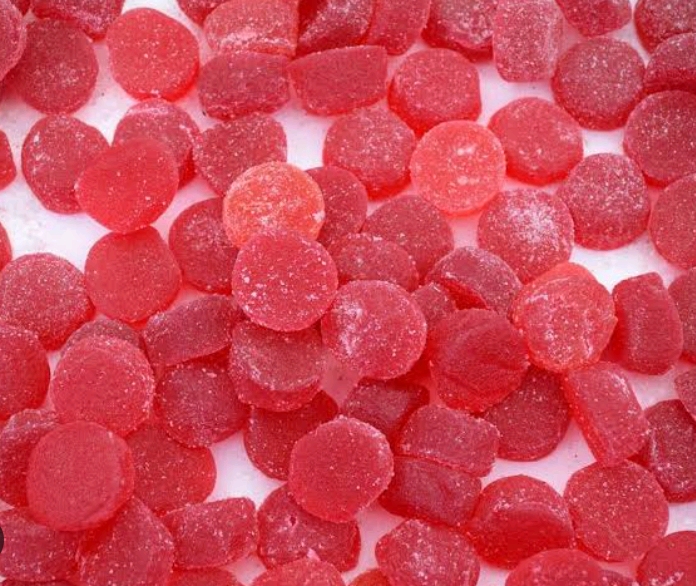In a landmark decision, the U.S. Food and Drug Administration (FDA) has officially banned Red Dye 3 in food products. This artificial coloring agent, also known as Red No. 3, has been a controversial topic for decades due to its potential health risks. The ban marks a significant step in addressing consumer concerns about synthetic food dyes, particularly in the United States.
What is Red Dye 3?
Red Dye 3, or Erythrosine, is a synthetic color additive commonly used to give foods, beverages, and even cosmetics a bright red or pink hue. It has been widely used in candies, baked goods, frozen desserts, and more. However, its safety has been questioned for years due to its association with adverse health effects in animal studies.
The dye is often confused with Red Dye 40, another synthetic red food dye. While both are artificial, Red Dye 3 has faced more scrutiny, leading to its eventual ban by the FDA. Understanding the difference between Red 3 vs. Red 40 is essential, as Red 40 is still widely used and not part of the current ban.
Why Has the FDA Banned Red Dye 3?
The FDA’s decision to ban Red Dye No. 3 stems from research linking the dye to potential carcinogenic effects. Studies have shown that high doses of Red Dye 3 caused thyroid tumors in rats, raising concerns about its long-term safety for humans. While the dye was already banned in cosmetics and certain topical products, it continued to be allowed in foods and ingested medications until now.
This decision comes amidst increasing pressure from consumer advocacy groups and public demand for safer food additives. Many organizations have argued that synthetic dyes like Red 3 pose unnecessary risks, especially when natural alternatives exist.
What Foods Contain Red Dye 3?
Red Dye 3 has been used in a wide variety of products. Some common foods and beverages that have historically contained the dye include:
- Candies: Gummies, lollipops, and jelly beans.
- Baked Goods: Frostings, cakes, and cookies with bright red or pink decorations.
- Snacks: Certain chips and processed snacks.
- Beverages: Fruit-flavored drinks and sodas.
- Desserts: Gelatins, popsicles, and ice creams.
Consumers seeking to avoid foods with Red Dye 3 should read ingredient labels carefully. While the ban will gradually phase out products containing the dye, many items currently on store shelves still include it.
Red 3 vs. Red 40: What’s the Difference?
Though both Red 3 and Red 40 are synthetic food dyes, their chemical compositions and safety profiles differ. Red 40, also known as Allura Red AC, is still approved for use in the United States.
The FDA’s Red Dye Ban applies only to Red 3, leaving Red 40 unaffected for now. This distinction highlights the need for consumers to stay informed about the additives in their food and beverages.
Impact of the Red Dye 3 Ban
The FDA’s Red Dye 3 ban has significant implications for both the food industry and consumers. For manufacturers, it means reformulating products to exclude the dye. Many companies are likely to replace Red Dye 3 with natural alternatives, such as beet juice or carmine, to maintain vibrant colors.
For consumers, the ban is a step toward safer food products. It also raises awareness about other synthetic dyes still in use. The move could encourage further scrutiny of food additives, including the potential for future bans on Red 40 and other dyes.
How to Avoid Foods with Red Dye 3
To minimize exposure to Red Dye 3, consider the following tips:
- Check Labels: Look for “Red No. 3,” “Red 3,” or “Erythrosine” in ingredient lists.
- Choose Natural Products: Opt for items colored with natural dyes like turmeric, beet juice, or spirulina.
- Stay Updated: Follow FDA updates on food safety regulations and bans.
What’s Next?
The FDA banning food dyes, starting with Red 3, reflects growing awareness about the health risks associated with artificial additives. While the ban is a positive step, many advocates are calling for further action on other dyes, such as Red 40, which is already banned in some countries.
As the FDA continues to evaluate food additives, consumers can take proactive steps by choosing natural, minimally processed products. The Red Dye No. 3 ban serves as a reminder of the importance of transparency and safety in the food industry.
By staying informed and making conscious choices, Americans can navigate this evolving landscape and prioritize their health.



